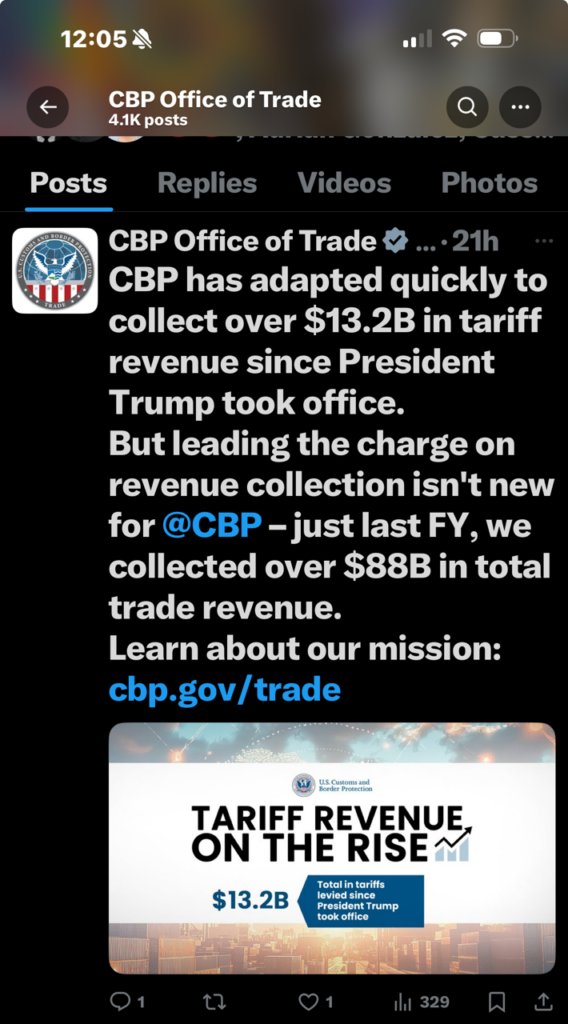
Texas Border Business
Texas Border Business
On March 31, 2025, U.S. Customs and Border Protection (CBP) highlighted its ongoing leadership in trade enforcement and revenue collection, sharing a major financial milestone on its official X (formerly Twitter) account. Since President Donald J. Trump took office, CBP reports it has quickly adapted to collect more than $13.2 billion in tariff revenue, evidence of its essential role in executing the nation’s trade policies.

But CBP’s success in revenue collection stretches far beyond the early Trump years. Just in Fiscal Year (FY) 2024, CBP collected over $88 billion in total trade revenue, reinforcing its position as one of the federal government’s top revenue-generating agencies—second only to the IRS. This figure includes duties, taxes, and fees on imports and other trade activity, underlining CBP’s massive influence on the U.S. economy.
Trade by the Numbers
CBP’s trade operations are vast and complex. In FY 2024, the agency:
• Processed over 2.8 million entry summaries valued at over $290 billion in December 2024 alone.
• Handled more than 38 million total entry summaries over the fiscal year.
• Saw over 1 billion de minimis shipments (low-value imports like small e-commerce packages).
• Collected $88.07 billion in total duties, taxes, and fees.
Here’s a quick snapshot of trade and revenue trends across recent years:
CBP Trade Statistics*
Select the table below to view:

CBP Trade Statistics*
1 FY 2025 is updated as of December 31, 2024.
* Amount includes Estimated and final duties, taxes, and fees paid by the trade community, including adjustments for refunds.
How to Learn More
For those interested in diving deeper into CBP’s revenue collection and enforcement efforts, several resources are available:
• CBP Trade Statistics: Offers up-to-date data on CBP’s trade operations, including tariff collections, shipment volumes, and enforcement actions.
• USITC DataWeb: Public access to detailed U.S. import/export data.
• Congressional Research Service Reports: Help contextualize U.S. tariff policies and trade legislation.
These tools provide comprehensive insights into the mechanics behind America’s trade enforcement, including the impact of tariffs and the evolution of global trade flows under recent administrations.















